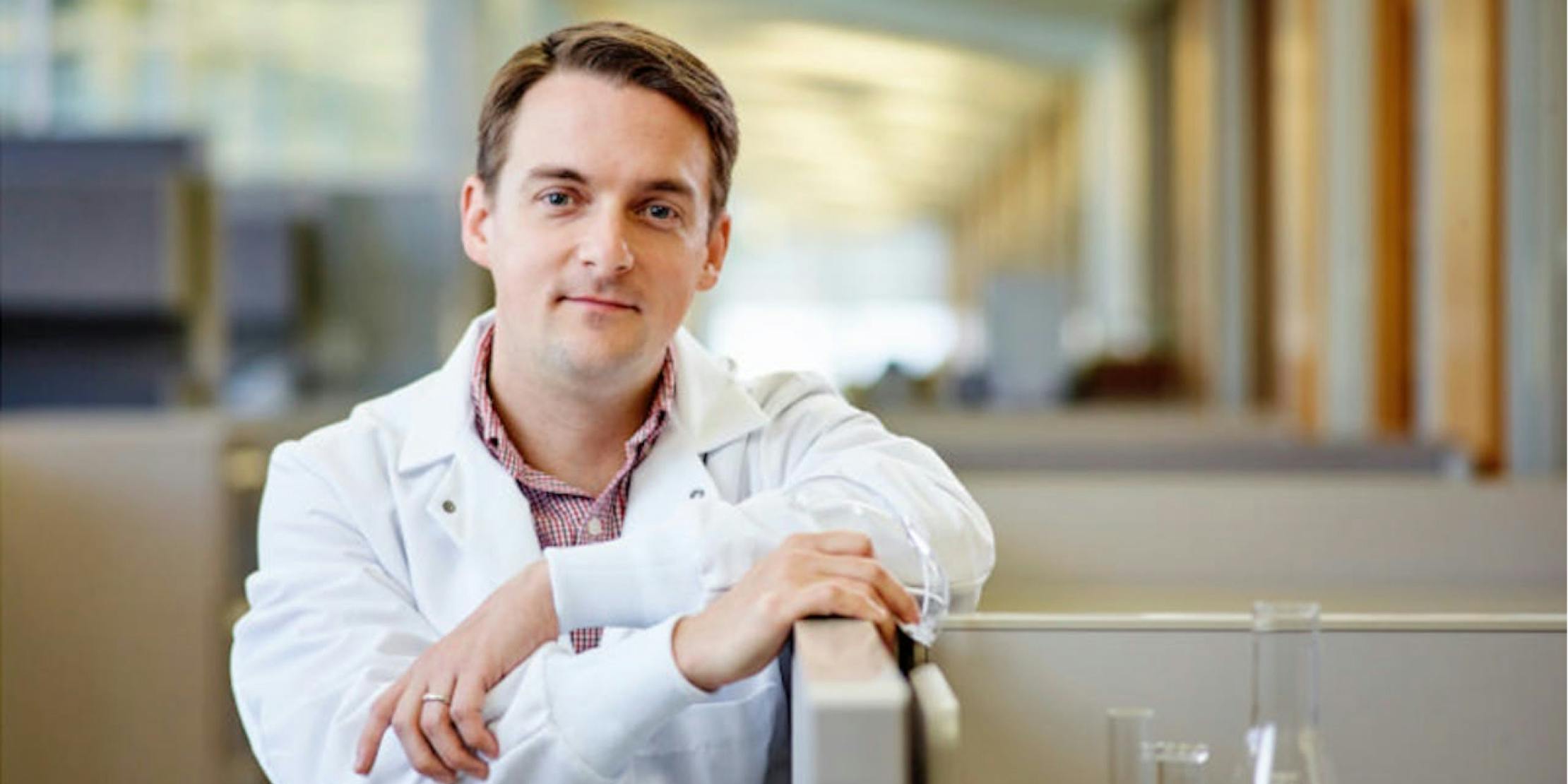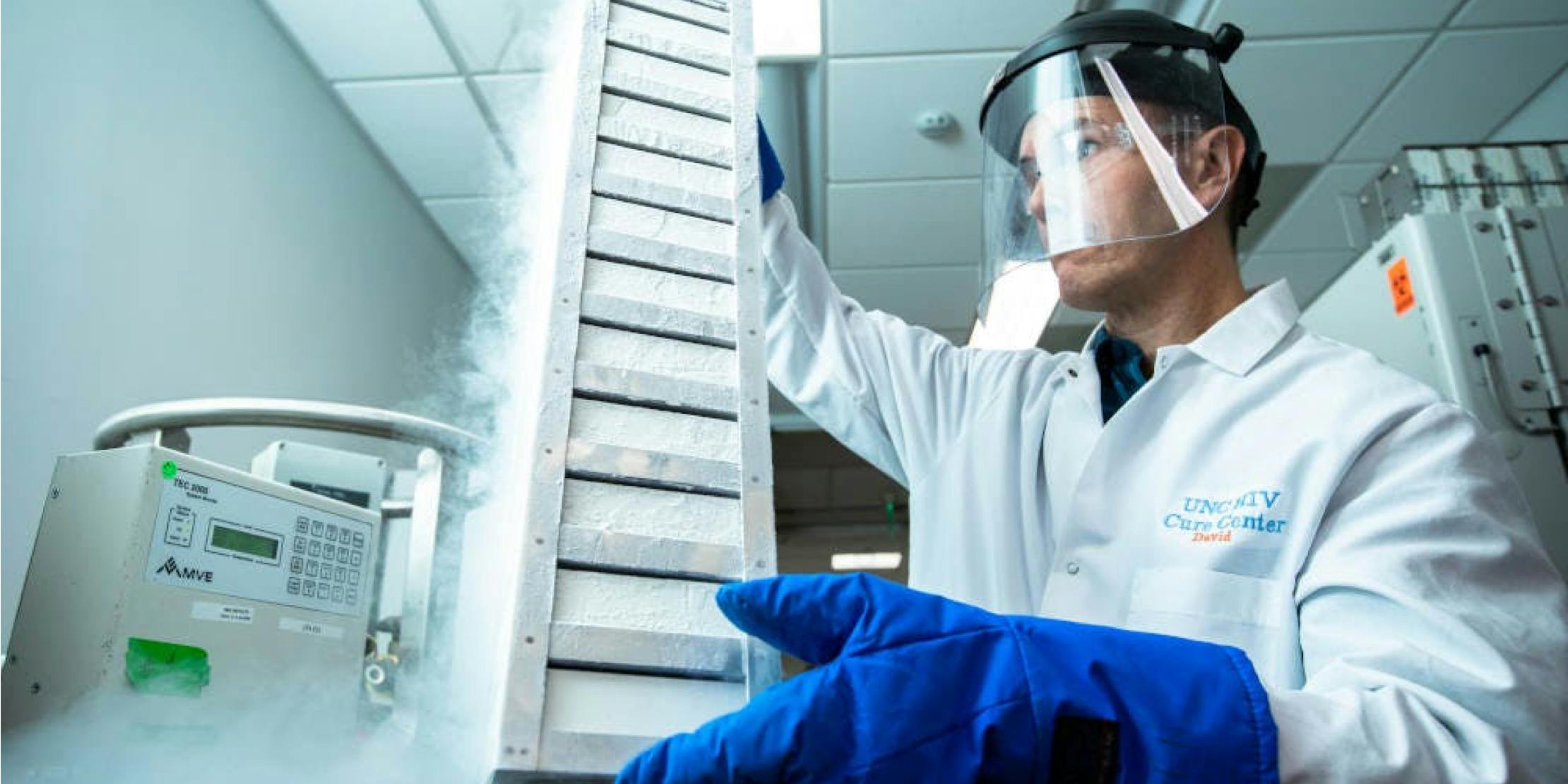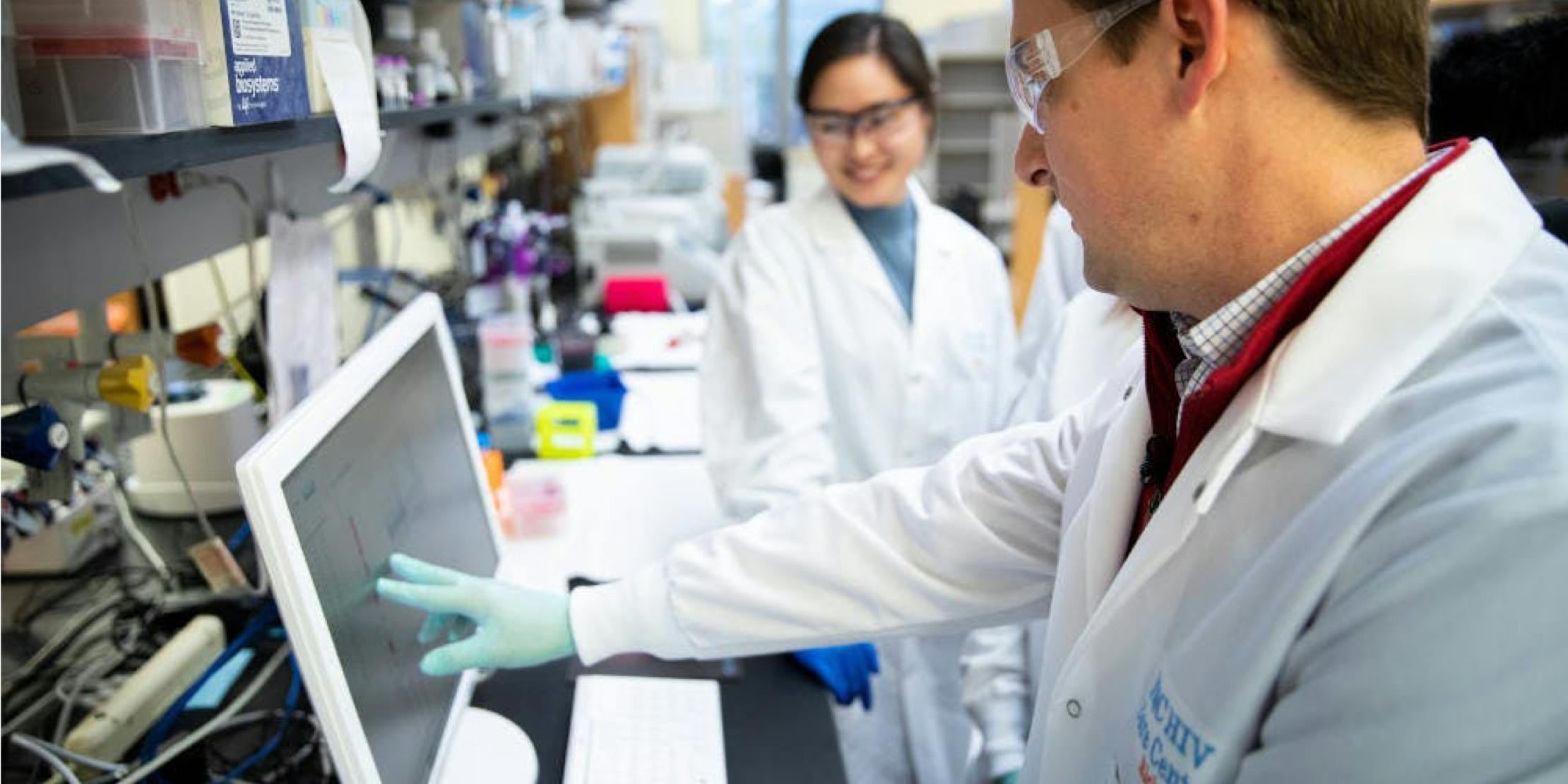HERE UNTIL HIV ISN'T: OUR APPROACH TO HIV CURE

Richard Dunham, Head of HIV Remission and Cure Research Strategy at ViiV Healthcare
Incredible advances have been made in the development of effective HIV treatments that allow people living with HIV to suppress their virus to undetectable levels and avoid transmitting it to others. This era of effective treatment with antiretrovirals (ARV) is undoubtedly a gigantic leap forward from the early beginnings of the HIV crisis, but the fact remains that there are almost 38 million people living with HIV worldwide.1
These individuals still have to take a lifetime of treatments, which can take a significant emotional and physical toll. To lift the substantial burdens of daily treatment and social stigma associated with HIV, a cure is essential toward accomplishing our goal of ending the HIV epidemic.
With this goal in mind, we are in pursuit of a cure for HIV:
Here until HIV isn’t. Our approach to HIV cure
HIV experts discuss ViiV Healthcare approach to HIV cure
The challenge of curing HIV
Because of the unique nature of HIV, discovering a cure comes with some specific challenges. The most significant of these challenges is the virus ability to hide itself and lay dormant in pockets of healthy immune system cells (CD4+ T cells) that are unrecognized by the immune system. Even if an individual has successfully suppressed their HIV through ARV treatment, the hidden HIV, called the “latent reservoir,” can re-emerge if ARV treatment is stopped.2
Richard Dunham, Head of HIV Remission and Cure Research Strategy at ViiV Healthcare, discusses the challenge of curing HIV
Because of this underlying barrier, examples of HIV cure have been few and far between throughout the entire history of the HIV epidemic. In fact, there have been only two instances of confirmed HIV cure, in which two patients (known as the Berlin and London patients), have successfully stopped daily ARV treatment and not experienced a rebound in their HIV.
These individuals were cured of their HIV after treatment for their separate cancer diagnoses, which required a series of difficult and intensive treatments to eradicate their immune and blood forming cells and replace them with an HIV-resistant bone marrow transplant. While their treatments were extremely high risk and not amenable to wide-scale implementation, these instances of cure bring hope of what is possible in our efforts to end the HIV epidemic.
Induce and reduce: our approach to HIV cure

HIV is a sneaky virus that can stay hidden in a small population of cells even while it's being suppressed by ARVs. Unless we can find a way to selectively target the hidden HIV, we’ll continue to require chronic treatments to keep the virus at bay. That’s why cure research currently underway by ViiV Healthcare targets these pockets of virus through the novel concept of “induce and reduce.”
This strategy is first focused on identifying the copies of HIV that may be hiding in human immune cells while the virus is suppressed through ARV therapy. Once identified, we drive this reservoir out of hiding (induce) so that it can be eliminated (reduce), either with the use of another drug or the immune system. While it may sound straight-forward, scientists haven’t been able to reactivate the virus in animals or people in an effective way until now.
New pioneering research on the induce strategy was most recently published in the journal Nature.3 This research, which was made possible through the collaboration of ViiV Healthcare and its partners at UNC-Chapel Hill and Emory University, summarized a scientific breakthrough in our efforts to push the reservoir virus out of hiding. For the first time, using a class of drugs new to the HIV field, a signaling pathway in cells was activated that could induce the hidden HIV to reactivate and become visible, while having relatively few other effects on the cells.
Mapping the path forward to a cure for HIV
How do you find a cure for HIV? Our approach is simple: collaboration. We realized a long time ago that we could go much further in our efforts if we worked to bring together the best brains in the business to focus on exploring every avenue, mechanism and compound toward our end goal of an HIV cure.
For that reason, ViiV Healthcare became part of a unique public-private research partnership in 2015 with the University of North Carolina at Chapel Hill, creating a dedicated HIV Cure Center and a jointly owned new company, Qura Therapeutics, that is focused on discovering a cure for HIV/AIDS.
This collaboration, the first-of-its-kind in the field of HIV cure, has unified the strengths of a world-renowned public research institution and pioneering private industry leader. Together, ViiV Healthcare and UNC scientists became part of a joint team based at the Chapel Hill campus, creating and working together on several exciting areas of research to cure HIV.

At work inside the HIV Cure Center
By merging our expertise in the HIV Cure Center and Qura Therapeutics to foster innovation and the discovery of new medicines, we’re sourcing the best science and thinking from around the world to accelerate novel breakthroughs and maximize our chance of finding an HIV cure. In the first five years of our partnership, we have made tremendous progress.
The research required to devise an HIV cure is complex and requires a commitment to the long term. As we look ahead to the future, we’re optimistic that the initial steps we’ve taken toward establishing our approach to HIV cure will move from the laboratory into clinical studies in people, big steps in the long journey to finding a cure for HIV. It is our life’s work to end the HIV epidemic, and we will be here until HIV isn’t.
References
- Joint United Nations Programme on HIV/AIDS Fact Sheet. Published December 2019. Accessed February 10, 2020. Available at: https://www.unaids.org/en/resources/fact-sheet.
- Castro-Gonzalez S, Colomer-Lluch M, Serra-Moreno R. Barriers for HIV Cure: The Latent Reservoir. AIDS Res Hum Retroviruses. 2018 Sep; 34(9):739-759.
- Nixon CC, Mavigner M, Sampey GC, et al. Systemic HIV and SIV latency reversal via non-canonical NF-κB signaling in vivo. Nature. 2020 Feb; 578(7793):160-165.
YOU MAY ALSO BE INTERESTED IN:
Since the advent of highly active antiretroviral therapy HIV has become a long-term health condition, as many people living with HIV with access to treatment are now living longer, healthier lives than before. However, Positive Perspectives study results indicate that many people living with HIV still aspire to treatments that have even less impact on quality of life.
OUR SCIENCE
Why are we leaders in HIV innovation? Because we listen. We collect insights from people living with HIV around the world that informs our approach to the discovery and development of innovative new treatment and prevention options.
Find out more about the importance of including more women in HIV clinical trials


